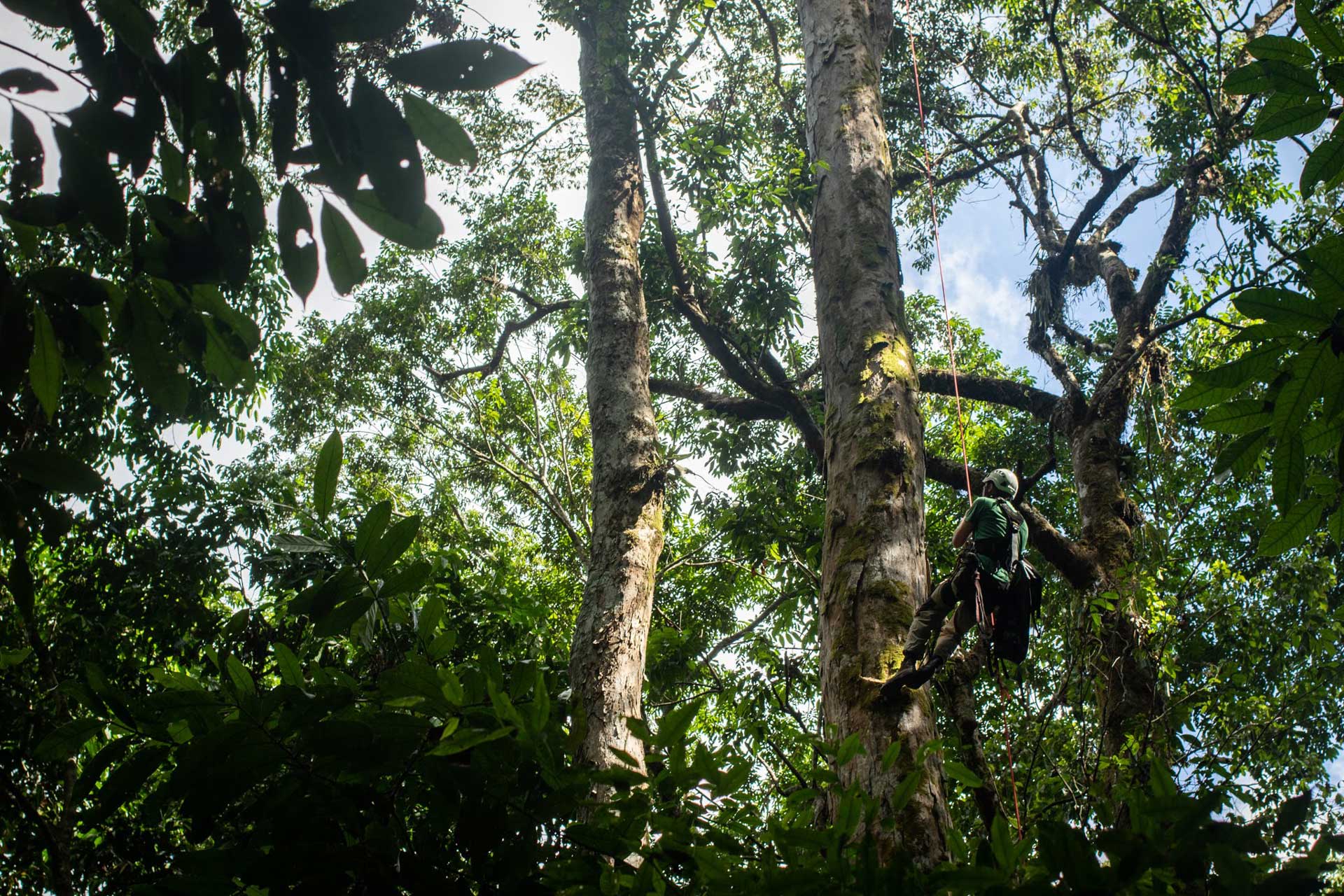
Cedrela odorata
Cedrela odorata
Cedro amargo
Audio
English Audio
Audio en Español
Plant Story
This tree grows up to 30 meters tall and is locally known as “bitter cedar” due to its bitter smell and taste, similar to garlic. It has a grooved bark and its wood is commonly used in cabinetry and interior woodworking. It is so highly sought after that in some regions it has been overharvested, reducing its population and causing it to be considered a threatened species by the IUCN. When dried, the fruits release large amounts of winged seeds into the wind as a dispersal strategy. It can be found from Mexico to South America, and in Costa Rica it is found in the low-elevation areas occurring in humid, dry, and seasonal forests.
Historia de la planta
Este árbol de hasta 30 metros de alto, es conocido como cedro amargo debido a que la mayoría de sus partes tiene olor y sabor amargo, similar al del ajo. Tiene la corteza fisurada y su madera es bastante usada para ebanistería e interiores, es tan apetecida que en algunos lugares se ha sobreexplotado, haciéndola infrecuente y por esto ha llegado a considerarse una especie amenazada según la UICN. Sus frutos cuando se secan, se abren y liberan muchas semillas aladas al viento, lo cual le ayuda a dispersarse. Se puede encontrar de México a Suramérica y en Costa Rica es común en las zonas bajas, tanto en bosques muy húmedos como secos y estacionales.
Plant details
Plant Information
Botanic Name:
Cedrela odorata
Common name(s):
Cedro amargo, Cedro amargo
Family
Meliaceae
Phenology
Flowering Months:
July
Fruiting Months:
November
Conservation
IUCN category:
Vulnerable / Vulnerable (VU)
CITES:
II
Interesting Links
Plant Locations
Cedro amargo
Plant details
Audio
English Audio
Audio en Español
Story / Historia
Plant Story
This tree grows up to 30 meters tall and is locally known as “bitter cedar” due to its bitter smell and taste, similar to garlic. It has a grooved bark and its wood is commonly used in cabinetry and interior woodworking. It is so highly sought after that in some regions it has been overharvested, reducing its population and causing it to be considered a threatened species by the IUCN. When dried, the fruits release large amounts of winged seeds into the wind as a dispersal strategy. It can be found from Mexico to South America, and in Costa Rica it is found in the low-elevation areas occurring in humid, dry, and seasonal forests.
Historia de la planta
Este árbol de hasta 30 metros de alto, es conocido como cedro amargo debido a que la mayoría de sus partes tiene olor y sabor amargo, similar al del ajo. Tiene la corteza fisurada y su madera es bastante usada para ebanistería e interiores, es tan apetecida que en algunos lugares se ha sobreexplotado, haciéndola infrecuente y por esto ha llegado a considerarse una especie amenazada según la UICN. Sus frutos cuando se secan, se abren y liberan muchas semillas aladas al viento, lo cual le ayuda a dispersarse. Se puede encontrar de México a Suramérica y en Costa Rica es común en las zonas bajas, tanto en bosques muy húmedos como secos y estacionales.
Plant Information
Botanic Name
Cedrela odorata
Common name(s)
Cedro amargo
Family
Meliaceae
Phenology
Flowering Months
July
Fruiting Monts
November
Conservation
IUCN category
Vulnerable / Vulnerable (VU)
CITES
II
Interesting Links
Plant Locations
Post A Comment
You must be logged in to post a comment.








No Comments